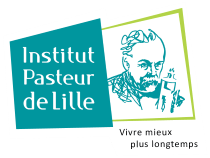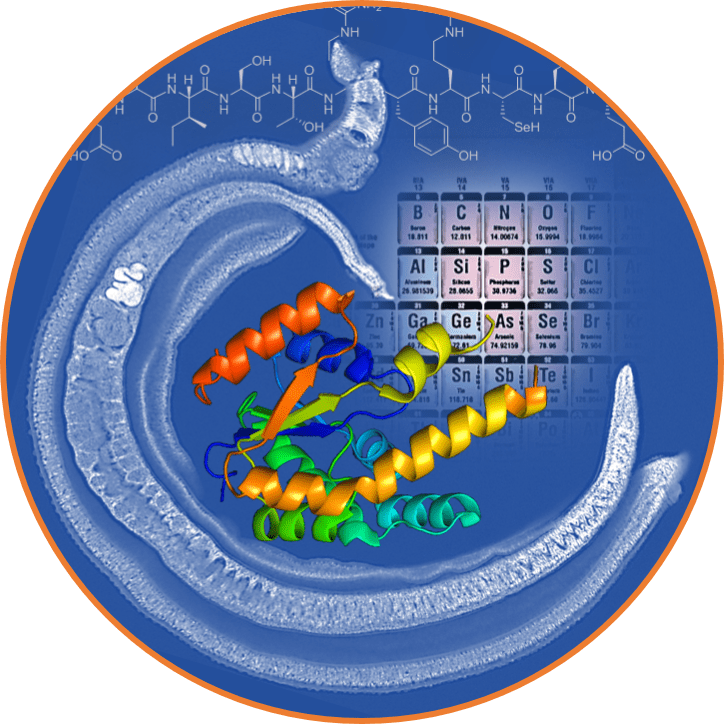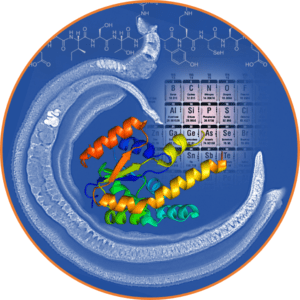Chemical Biology of Flatworms (CBF)
INSERM U1019 – CNRS UMR9017 – Lille University – CHU Lille – Institut Pasteur de Lille

Presentation
The Chemical Biology of Flatworms (CBF) team focuses its research on Schistosomiasis, which is the second most important parasitic disease after malaria. It affects 250 million people and is responsible for about 200 000 deaths per year. Schistosome parasites are blood-dwelling flatworms with a remarkable capacity to reproduce and to escape immune responses from the host. The pathology of schistosomiasis is mainly due to the high fecundity of female worms and the accumulation of parasite eggs in host tissues, causing severe disorders.
One hallmark of CBF team is its capacity to combine chemical protein synthesis and artificial biosystems for studying the biology of Schistosoma mansoni, one of the major schistosome species infecting humans, and for launching medicinal chemistry programs towards the discovery of novel drugs against this parasitic disease.
Highlights
- Our work published in may this year in Nature Communications (Diemer, V. et al. A cysteine selenosulfide redox switch for protein chemical synthesis) describes a novel selenium derivative of cysteine for protein chemical synthesis. It was featured by the journal Editors. (Diemer, V.; Ollivier, N.; Leclercq, B.; Drobecq, H.; Vicogne, J.; Agouridas, V.; Melnyk, O. A Cysteine Selenosulfide Redox Switch for Protein Chemical Synthesis. Nat Commun 2020, 11, 2558).
- Hydrazone or oxime ligation chemistries are among the most popular techniques for bioconjugation. We discovered that the amino acid arginine can catalyse these reactions in water at neutral pH, the preferred solvent for handling biomolecules. The reaction proceeds well in phosphate buffer but is particularly efficient in bicarbonate/carbon dioxide buffer system, which is classically used for buffering cell culture media. (Ollivier, N.; Agouridas, V.; Snella, B.; Desmet, R.; Drobecq, H.; Vicogne, J.; Melnyk, O. Catalysis of Hydrazone and Oxime Peptide Ligation by Arginine. Org Lett 2020, 22, 8608-8612).
- Receptor tyrosine kinases (RTKs) are key regulators of cellular functions in metazoans. In vertebrates, RTKs are mostly activated by polypeptides but are not naturally sensitive to amino acids or light. Taking inspiration from Venus kinase receptors (VKRs), an atypical family of RTKs found in nature, we have transformed the human insulin (hIR) and hepatocyte growth factor receptor (hMET) into light-activatable glutamate receptors. (Leippe, P.; Broichhagen, J.; Cailliau, K.; Mougel, A.; Morel, M.; Dissous, C.; Trauner, D.; Vicogne, J. Transformation of Receptor Tyrosine Kinases into Glutamate Receptors and Photoreceptors. Angewandte Chemie International Edition 2020, 59, 6720-6723).
Members
Oleg MELNYK
DR1 Inserm, group leader
ORCID number : 0000-0002-3863-5613
Vangelis AGOURIDAS
MCF, ENSCL
ORCID number : 0000-0003-0911-1527
Vincent DIEMER
CRCN, CNRS
ORCID number : 0000-0002-5735-4630
Nathalie OLLIVIER
IR2, IPL
Hervé DROBECQ
IE, Univ Lille 2
Benoit SNELLA
Tech, IPL
Rémi DESMET
Tech, IPL
Magalie SÉNÉCHAL
AI, CNRS
Florent KERDRAON
PhD student
Olga FIRSTOVA
PhD student
Benjamin GRAIN
PhD student
Jérôme VICOGNE
CR1, CNRS
Numéro ORCID : 0000-0001-8360-7497
Julien LANCELOT
Post-doc
Colette DISSOUS
DR2, Inserm
ORCID number : 0000-0002-5003-8205
Raymond PIERCE
DR1, CNRS
ORCID number : 0000-0001-9820-8608
Stéphanie CABY
IE, IPL
Alexandra MOUGEL
IE, CNRS
Marie-José GHORIS
Tech, IPL
Vincent GIROD
PhD student
Publications
Leippe, P.; Broichhagen, J.; Cailliau, K.; Mougel, A.; Morel, M.; Dissous, C.; Trauner, D.; Vicogne, J.
Transformation of Receptor Tyrosine Kinases into Glutamate Receptors and Photoreceptors.
Angewandte Chemie International Edition 2020, 59, 6720-6723.
Diemer, V.; Ollivier, N.; Leclercq, B.; Drobecq, H.; Vicogne, J.; Agouridas, V.; Melnyk, O.
Cysteine Seleno sulfide Redox Switch for Protein Chemical Synthesis.
Nat Commun 2020, 11, 2558.
Agouridas, V.; El Mahdi, O.; Diemer, V.; Cargoet, M.; Monbaliu, J.-C. M.; Melnyk, O.
Chemical Ligation and Extended Methods. Mechanisms, Catalysis, Scope and Limitations.
Chem. Rev. 2019, 12, 7328-7443.
Ollivier, N.; Toupy, T.; Hartkoorn, R. C.; Desmet, R.; Monbaliu, J.-C. M.; Melnyk, O.
Accelerated Microfluidic Native Chemical Ligation at Difficult Amino Acids toward Cyclic Peptides.
Nat. Commun. 2018, 9, No 2847.
Simonneau, C.; Berenice, L.; Mougel, A.; Adriaenssens, E.; Paquet, C.; Raibaut, L.; Ollivier, N.; Drobecq, H.; Marcoux, J.; Cianferani, S. et al.
Semi-Synthesis of a Hgf/Sf Kringle One (K1) Domain Scaffold Generates a Potent in Vivo Met Receptor Agonist.
Chem. Sci. 2015, 6, 2110-2121.
Keywords
Protein Chemical Synthesis ; Protein Therapeutics ; Schistosomiasis ; Drug discovery ; Organic chemistry


